Boss OverDrive/Distortion OS-2 Bruksanvisning
Läs gratis den bruksanvisning för Boss OverDrive/Distortion OS-2 (1 sidor) i kategorin Gitarr. Guiden har ansetts hjälpsam av 29 personer och har ett genomsnittsbetyg på 3.8 stjärnor baserat på 15 recensioner. Har du en fråga om Boss OverDrive/Distortion OS-2 eller vill du ställa frågor till andra användare av produkten? Ställ en fråga
Sida 1/1

Owner’s Manual
AC Adaptor
(PSA series; sold separately)
Electric Guitar
English
LEVEL knob
This adjusts the volume of the eect sound.
Clockwise rotation raises the volume and counterclockwise rotation decreases.
7Overdrive and distortion have been combined into one compact eects unit.
7You are provided with a wealth of new sound creation possibilities as a result of the mixture of overdriven and distorted sounds.
7The unit equipped with a COLOR knob which allows you to adjust at will the respective portions included in the sound mixture.
7A overdrive that really sounds like it comes from a large-scale tube amp is created as a result of the unique BOSS “Asymmetrical Overdrive Circuitry” that is incorporated in the unit.
OUTPUT jack
Connect an amplier to this jack.
DC IN jack
Accepts connection of an AC Adaptor (PSA series; sold separately). By using an AC Adaptor, you can play
without being concerned about how much battery power you have left.
* We recommend that you keep batteries installed in the unit even though you’ll be powering it with
the AC adaptor. That way, you’ll be able to continue a performance even if the cord of the AC adaptor
gets accidentally disconnected from the unit.
* Use only the specied AC adaptor (PSA-series).
* If the AC adaptor is connected while power is on, the power supply is drawn
from the AC adaptor.
CHECK indicator
This indicator shows whether an eect is ON/OFF, and doubles as the Battery Check indicator.
The indicator lights when an eect is ON.
* If this indicator goes dim or no longer lights while an eect is ON, the battery is near
exhaustion and should be replaced immediately.
TONE knob
This adjusts the tone of the eect sound.
As you rotate the knob clockwise, higher frequencies are emphasized, and
counterclockwise cuts them.
Pedal Switch
This switch turns the eects ON/OFF.
Thumbscrew
When this screw is loosened, the pedal will open, allowing you to change the
battery.
* For instructions on changing the battery, refer to “Changing the Battery.”
Panel Descriptions
Main Features
DRIVE knob
This adjusts the degree to which the overdrive/distortion is applied.
Turning this knob clockwise rotation increases the distortion, producing a more
intense sound. Turning it counterclockwise rotation decreases the distortion.
COLOR knob
This adjusts the balance between the overdrive and distortion.
Turning this knob clockwise rotation increases the proportion of distortion
sound; turning it counterclockwise rotation increases the proportion of
overdrive sound.
* When the knob is turned to one or the other extreme, you obtain solely
either the distortion or the overdrive eect.
IPrecautions When Connecting
5
To prevent malfunction and equipment failure, always turn
down the volume, and turn o all the units before making any
connections.
5
Once the connections have been completed, turn on power to
your various devices in the order specied. By turning on devices
in the wrong order, you risk causing malfunction and/or damage
to speakers and other devices.
When powering up: Turn on the power to your guitar amp last.
When powering down: Turn o the power to your guitar amp rst.
5
Before turning the unit on/o, always be sure to turn the volume
down. Even with the volume turned down, you might hear some
sound when switching the unit on/o. However, this is normal and
does not indicate a malfunction.
Use of Battery
5
A battery was installed in the unit before it left the factory. The life
of this battery may be limited, however, since its primary purpose
was to enable testing.
5
If you handle batteries improperly, you risk explosion and uid
leakage. Make sure that you carefully observe all of the items
related to batteries that are listed in “USING THE UNIT SAFELY” and
“IMPORTANT NOTES” (supplied on a separate sheet).
5
When operating on battery power only, the unit’s indicator will
become dim when battery power gets too low. Replace the
battery as soon as possible.
5
Batteries should always be installed or replaced before connecting
any other devices. This way, you can prevent malfunction and
damage.
Main Specications
Nominal Input Level -20 dBu
Input Impedance 1 MΩ
Nominal Output
Level
-20 dBu
Output Impedance 1 kΩ
Recommended Load
Impedance
10 kΩ or greater
Power Supply Carbon-zinc battery (9 V, 6F22) or
Alkaline battery (9 V, 6LR61)
AC adaptor (PSA series: sold separately)
Current Draw 12 mA
* Expected battery life under continuous use:
Carbon: 33.5 hours
Alkaline: 55 hours
These gures will vary depending on the
actual conditions of use.
Dimensions 73 (W) x 129 (D) x 59 (H) mm
2-7/8 (W) x 5-1/8 (D) x 2-3/8 (H) inches
Weight 385 g / 14 oz (including battery)
Accessories Leaet (“USING THE UNIT SAFELY,” “IMPORTANT
NOTES,” and “Information”)
Carbon-zinc battery (9 V, 6F22)
Options
(sold separately)
AC adaptor (PSA-series)
* 0 dBu = 0.775 Vrms
* This document explains the specications of the product at the
time that the document was issued. For the latest information,
refer to the Roland website.
Guitar Amplier
Owner’s Manual
Before using this unit, carefully read the sections entitled: “USING THE UNIT SAFELY” and “IMPORTANT NOTES” (supplied on a separate sheet).
After reading, keep the document(s) where it will be available for immediate reference.
INPUT jack
This jack accepts input signals (coming from a guitar, some other electric or
electronic musical instrument, or another eects unit).
* The INPUT jack doubles as the power switch.
Power to the unit is turned on when you plug
into the INPUT jack; the power is turned o
when the cable is unplugged.
To prevent unnecessary battery consumption,
be sure to disconnect the plug from the
INPUT jack when not using the eects unit.
© 2018 Roland Corporation
02
Operating the Unit
1. When you have made the necessary connections, set
the knobs as shown in the illustration.
6 5 4 3
2. Press the Pedal Switch and make sure that the CHECK
indicator lights up.
3. Using the COLOR knob adjust the balance between the
distortion and the overdrive.
When turned clockwise, the distorted sound proportion is increased.
When turned counterclockwise, the overdriven sound proportion is
increased. When the knob is turned to the other extreme, you obtain
solely either the distortion or the overdrive eect.
4. Using the DRIVE knob adjust the degree to which the
eect is to be applied.
The further it is moved clockwise, the greater the distortion becomes.
5. Using the TONE knob, adjust the tone of the sound
heard when the eect is on.
The further it is moved clockwise, the more the upper range is
enhanced, and the sharper the sound becomes.
6. Using the LEVEL knob, adjust the volume of what is
heard when the eect is on.
It should be adjust so there is no dierence in volume between when
the eect is on and when it is o.
Changing the Battery
1. Hold down the pedal and loosen the thumbscrew, then
open the pedal upward.
* The pedal can be opened without detaching the thumbscrew
completely.
Thumbscrew
Battery Housing
Pedal
Spring Base
Coil Spring
Guide Bush
Hole
Battery Snap
Cord
Battery
Snap
9 V Battery
2. Remove the old battery from the battery housing, and
remove the snap cord connected to it.
3. Connect the snap cord to the new battery, and place
the battery inside the battery housing.
* Be sure to carefully observe the battery’s polarity (+ versus -).
4. Slip the coil spring onto the spring base on the back of
the pedal, and then close the pedal.
* Carefully avoid getting the snap cord caught in the pedal, coil
spring, and battery housing.
5. Finally, insert the thumbscrew into the guide bush
hole and fasten it securely.
Produktspecifikationer
| Varumärke: | Boss |
| Kategori: | Gitarr |
| Modell: | OverDrive/Distortion OS-2 |
| Färg på produkten: | Wit |
| Bredd: | 99.06 mm |
| Djup: | 25.4 mm |
| Höjd: | 68.58 mm |
| Sladdlängd: | 1.5 m |
| Typ av strömkälla: | AC |
| Medföljande kablar: | AC |
| Antal USB 2.0-portar: | 6 |
| Inspänning: | 110 - 220 V |
| Strömspänningsskydd: | Overcharge, Overheating |
| Utström: | 10000 mA |
| Kompatibilitet: | iPhone, iPad, iPod |
| Typ-av-laddare: | Binnen |
| Laddare kompatibilitet: | Universeel |
| Arbetsprincip: | Contact |
Behöver du hjälp?
Om du behöver hjälp med Boss OverDrive/Distortion OS-2 ställ en fråga nedan och andra användare kommer att svara dig
Gitarr Boss Manualer

17 December 2024

17 December 2024

17 December 2024

17 December 2024

28 Augusti 2024
Gitarr Manualer
- Fender
- Yamaha
- Carlsbro
- Hils
- Gretsch Guitars
- Epiphone
- Gallien-Krueger
- Zoom
- Peavey
- Line 6
- Harley Benton
- Pyle
- Gibson
- Sennheiser
- Chord
Nyaste Gitarr Manualer
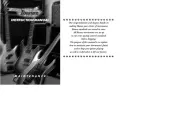
11 Oktober 2025
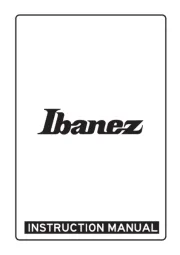
10 Oktober 2025
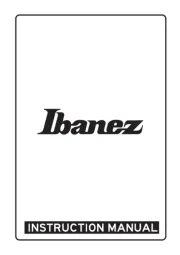
10 Oktober 2025
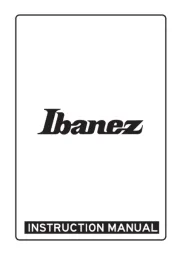
10 Oktober 2025
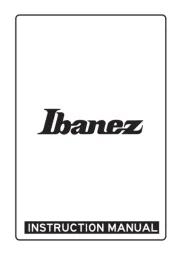
10 Oktober 2025
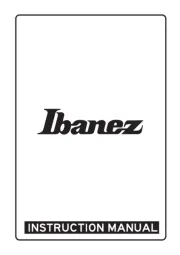
10 Oktober 2025
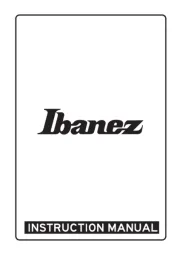
10 Oktober 2025
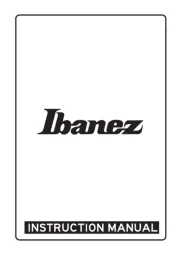
10 Oktober 2025
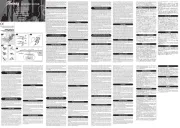
10 Oktober 2025
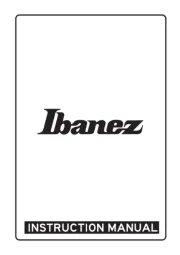
10 Oktober 2025